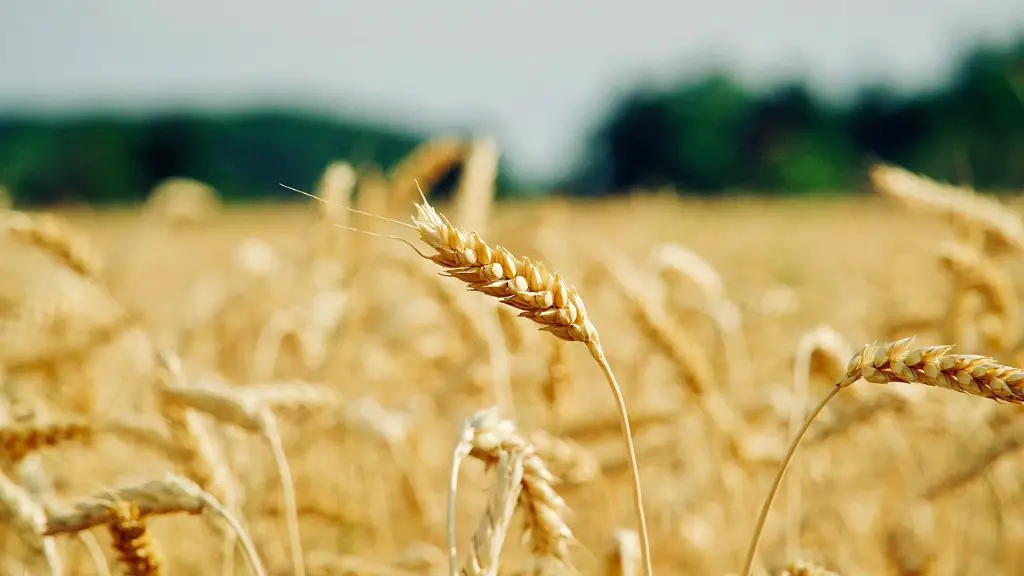Agricultural landscaping is the practice of managing the land to create appealing, functional, and sustainable landscapes. It is more than just decorating a backyard; it involves the careful integration of different types of crops, trees, and other plants into a balanced and desired landscape. In some cases, the goal of creating an agricultural landscape is to maximize productivity and improve quality of life, by providing a quality habitat for animals, promoting pollination and providing water for irrigation. In other cases, the goal may be to create an aesthetically pleasing environment for the farmer and other visitors.
When implemented correctly, agricultural landscaping can result in healthier soils and improved habitat. The traditional approach to farming is to use fertilizers, herbicides and pesticides, which can have harmful environmental impacts, such as the destruction of wildlife, water pollution and soil degradation. Agricultural landscaping helps to encourage beneficial organisms, such as earthworms, beneficial soil microbes and beneficial insects. These organisms break down organic matter, cycle nutrients and help to improve soil structure, fertility and water-holding capacity.
Agricultural landscaping also helps to preserve natural resources and reduce erosion. By planting trees and other vegetation, the soil is stabilized and erosion is reduced, while a balanced mix of vegetation can reduce the runoff of water and other pollutants. Additionally, the presence of vegetation can also help to control temperatures, reduce wind speeds, and absorb dust and other airborne particulates.
It is also possible to use agricultural landscaping to create a more aesthetically pleasing environment. The use of ornamental plants, trees and shrubs can provide a pleasing appearance for visitors and make the environment more inviting. Additionally, using plant species native to the area can reduce the need for extra maintenance and create a more sustainable landscape.
Agricultural landscaping also provides important environmental benefits, such as providing habitat for birds and other wildlife. This can provide an opportunity for farmers to increase their income by attracting visitors who pay to observe the local wildlife. Additionally, agricultural landscaping can help to reduce disruption to the local ecosystem due to increased human activity in the area.
Agricultural landscaping is an important aspect of sustainable farming and can help to create an enjoyable environment for humans, animals and the environment. With careful planning, the use of native plants, and benefits such as habitat protection and soil improvement, agricultural landscaping can have a significant positive impact on the local environment.
Types of Landscaping in Agriculture
Agricultural landscaping can be broken down into two main categories: intensive and extensive. Intensive landscaping involves the use of large-scale landscaping projects such as terracing, embankments and windbreaks. Extensive landscaping involves the use of smaller-scale landscaping projects such as hedgerows, shelterbelts and riparian buffer strips. Which type of landscaping is appropriate for a given situation depends on the size of the farm, the topography, climate and soil.
Intensive agricultural landscaping involves large-scale projects such as terracing, embankments and windbreaks. Terraces are used to level slopes and create higher yields, while embankments can be used for flood protection and to control water runoff. Windbreaks are used to reduce wind speed and reduce the impacts of wind-borne erosion. These arrangements can be aesthetically pleasing, and can provide valuable habitat for birds, insects and pollinators.
Extensive agricultural landscaping involves the use of smaller-scale landscaping projects such as hedgerows, shelterbelts and riparian buffer strips. Hedgerows are created by planting a line of trees and shrubs, while shelterbelts are used to control wind speed and reduce wind-borne erosion. Riparian buffer strips are used to protect waterways from nutrient and pesticide runoff. These landscaping arrangements can provide a habitat for wildlife, create visual diversity and enhance environmental aesthetics.
Agricultural landscaping can also involve the use of organic or synthetic materials to improve aesthetic value and increase productivity. Organic materials such as compost and mulch can help to retain moisture, suppress weeds and improve soil fertility, while synthetic materials such as plastic sheeting can control erosion and reduce water losses.
In addition to vegetation and natural materials, agricultural landscaping can also involve the use of manufactured materials such as irrigation and drainage systems. Irrigation systems provide a reliable water source for crops and can help to reduce water losses and conserve water resources. In addition, drainage systems can help to reduce the risk of flooding and can help to improve soil health.
Benefits of Landscaping in Agriculture
Landscaping in agriculture can benefit both the environment and farmers. The use of native plants, trees and shrubs can help to reduce runoff of both pollutants and water, resulting in improved water quality. Planting and maintaining vegetative cover can also help to reduce wind speeds and reduce the amount of dust and other air pollutants in the air.
Agricultural landscaping can also help to improve soil health by maintaining soil structure and reducing erosion. The plants can also improve organic matter content and nutrient availability, reducing the need for fertilizers and herbicides. Additionally, the use of organic materials such as compost and mulch can help to improve soil fertility, increase yields, and reduce water losses.
Agricultural landscaping can also help to reduce energy consumption. The use of windbreaks, trees and vegetation can reduce wind speeds and reduce the need for artificial heating and cooling. Additionally, the presence of plants can reduce the temperature of the area, reducing the need for air conditioning.
Agricultural landscaping can also provide other valuable benefits, such as providing habitat for wildlife and providing an aesthetically pleasing environment for visitors. Additionally, the presence of vegetation can reduce the amount of noise and other pollutants in the air, creating a more pleasant environment for work.
Finally, planting vegetation can also provide additional income for the farmer. Providing habitat for birds and other wildlife can attract visitors, who may be willing to pay for opportunities to observe the local wildlife. Additionally, the presence of aesthetically pleasing landscape can make the farm more attractive to visitors, leading to increased sales of produce and other farm goods.
Tools and Techniques Used in Landscaping in Agriculture
There are various tools and techniques used in landscaping in agriculture. The use of large-scale projects such as terracing, embankments and windbreaks can help to stabilize soils, reduce runoff, and protect water quality. Additionally, the use of native plants, trees and shrubs helps to create visual diversity, improve habitat and provide beneficial biodiversity.
Irrigation systems are also commonly used in agricultural landscaping, providing a reliable water source for crops. Additionally, the use of organic materials such as compost and mulch can help to improve soil fertility, reduce weeds and improve water penetration into the soil.
The use of manufactured materials can also be beneficial. Plastic sheeting can be used to control erosion and reduce water losses, while gravel and concrete can provide pathways for walks and prevent soil compaction and damage to the soil.
Finally, most agricultural landscaping projects involve the use of specialized equipment, such as hand tools and tractors. Hand tools are used for tasks such as planting trees, while tractors are used to move materials, plough and seed. Additionally, certain agricultural landscaping projects may also require the use of additional equipment, such as skid loaders and backhoes.
Tips for Planning Landscaping in Agriculture
When planning an agricultural landscaping project, there are a few key points to consider. First, the size of the plot must be taken into account to ensure that the project is suitable for the plot. Additionally, the condition of the soil must be considered, as certain plants may require certain soil conditions to grow.
Next, the goal of the project should be taken into consideration. Are you trying to improve yields, reduce erosion or provide habitat for wildlife? Knowing the goals of the project will help to determine what type of vegetation and materials should be used.
The location of the project should also be taken into account. Which direction does the wind typically blow from? Is the plot in the shade? Are there any environmental issues or regulations that must be taken into consideration? Knowing the local conditions can help to determine the most suitable vegetation and materials.
Finally, the budget should be taken into consideration. What materials and equipment will be needed? How much will they cost? Planning a landscaping project can be a costly endeavor, and a budget should be set before the project is undertaken.
Maintenance of Landscaping in Agriculture
To ensure that the agricultural landscaping project is successful, regular maintenance is necessary. The vegetation should be monitored and dead plants should be removed. Additionally, irrigation systems should be checked and adjusted as needed, to ensure that the crops are receiving adequate water.
The soil should also be checked regularly for nutrient levels and compaction. Organic materials, such as compost and mulch, should be added to the soil to help improve soil fertility. Additionally, weeds should be spotted and removed as soon as possible, to prevent them from competing with the plants for resources.
In some cases, the use of fertilizers and pesticides may be necessary. When using these products, they should only be applied as directed, as they can have negative impacts on the environment if used incorrectly. Furthermore, the use of organic fertilizers and pesticides should be considered whenever possible.
Finally, the use of manufactured materials should also be monitored for wear and tear. Plastic sheeting should be examined for signs of wear and replaced when needed, and irrigation systems should be calibrated and adjusted to ensure that the water is being supplied in the correct amounts.





